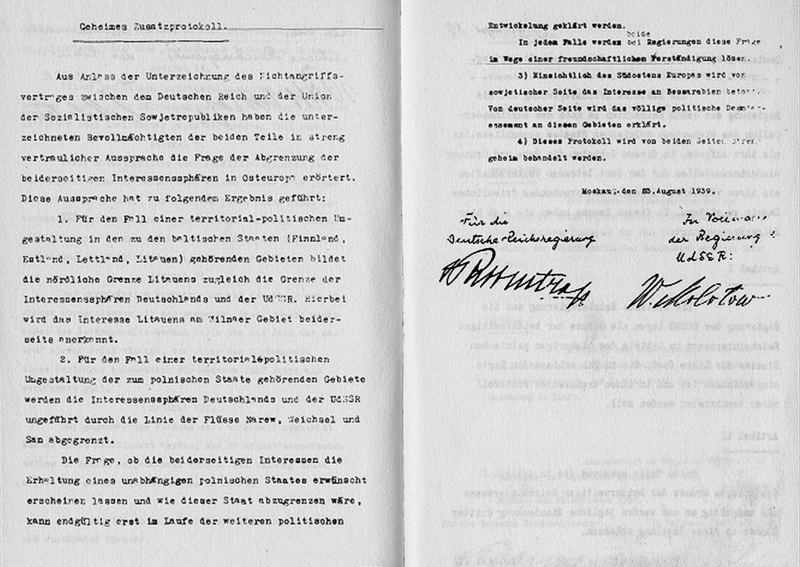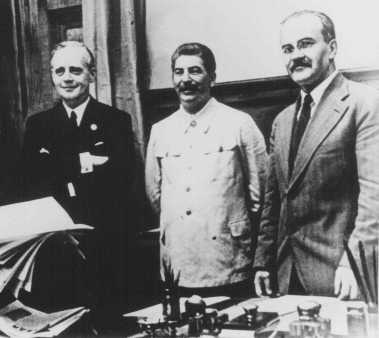The German-Soviet Nonaggression Pact was signed on August 23, 1939, just before World War II, by Nazi Germany and the Soviet Union. By signing the pact, the countries agreed not to take any military action towards each other for the next ten years to come. Joseph Stalin, the Soviet leader, hoped he would be able to keep his country on peaceful terms by signing the pact, and German leader Adolf Hitler signed it to invade Poland unopposed. However, the Nazis broke the pact when they invaded the Soviet Union in Operation Barbarossa in June of 1941.
As Hitler and the Nazis prepared to invade Poland, his generals became nervous. They feared that by doing so, they might start a war with Russia, despite Stalin’s army having been seriously weakened in the years prior. So to avoid this, Hitler began thinking about strengthening relations with Stalin and the Soviets. As more and more European countries began looking for potential allies as war crept up on them, Hitler’s foreign minister began dropping hints to the Russian government that they may be allowed some polish territory when Hitler invaded Poland, which caught Stalin’s attention. When Hitler sent Stalin a message asking if he would receive him, Stalin agreed.
Joachim von Ribbentrop, the German foreign minister, flew to Moscow on August 22, 1939 and met with Stalin and his foreign minister, Vyacheslav Molotov, at the Kremlin. Ribbentrop, on behalf of Hitler, proposed they create a nonaggression pact that would last for 100 years. In response, Stalin said that ten years would be enough.
The pact also contained a secret protocol dividing Eastern Europe between the two countries. Finland, Estonia, Latvia, and eastern Poland were given to the Soviets and Romania, Lithuania, and the rest of Poland to the Nazis. The secret protocol would not be revealed until World War II ended in 1945. Also, the pact stated that neither the Soviets nor the Nazis would aid a third party that tried to attack either country.
Hitler, who was in Bavaria, nervously awaited the news of the pact as Ribbentrop called him many times. When he called him again in the early morning of August 23, Ribbentrop confirmed that they had settled everything and Hitler was very excited, as he could now take Poland without fear of the Soviets getting involved.
The same day the nonaggression pact was announced, Great Britain and France pledged to protect Poland in case of attack from Germany and Russia. Hitler was also planning to begin his strike on Poland with quick, surprise attacks. He decided not to go through with the attacks that day, but ordered his troops to strike on September 1. On September 3, only two days later, both Great Britain and France declared war on Germany and thus, the second World War had begun.
In the end, Hitler would break the pact with the Soviets. On June 22, 1941, he sent about 3 million of his men to invade the Soviet Union in the unsuccessful Operation Barbarossa, which would be the German military’s largest operation of the war. Barbarossa lasted until December 5, 1941.



